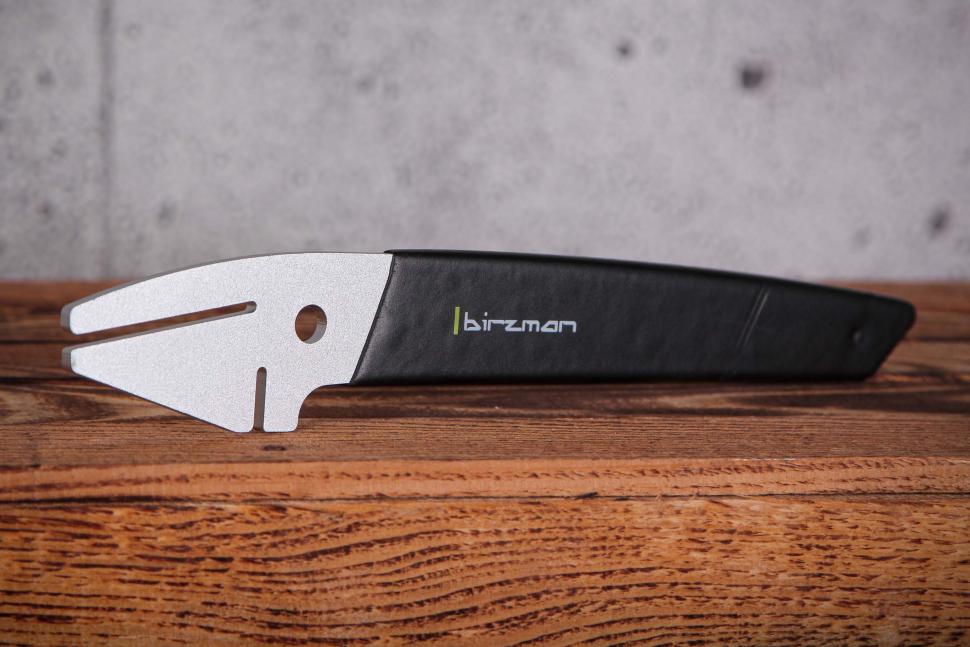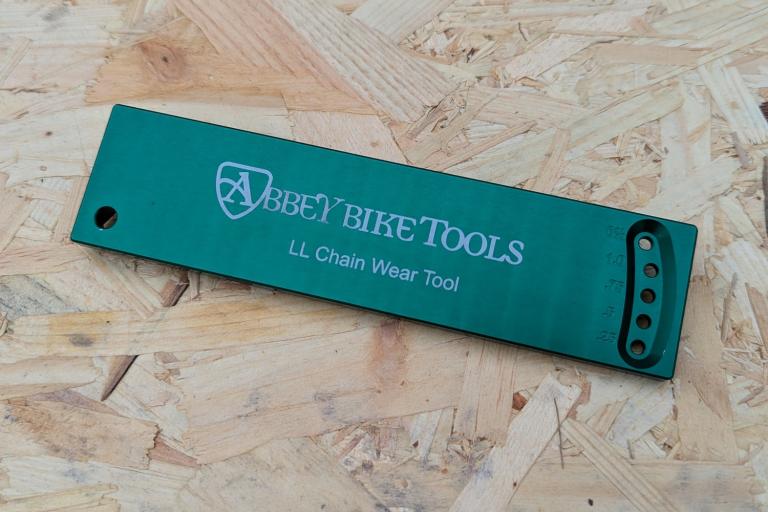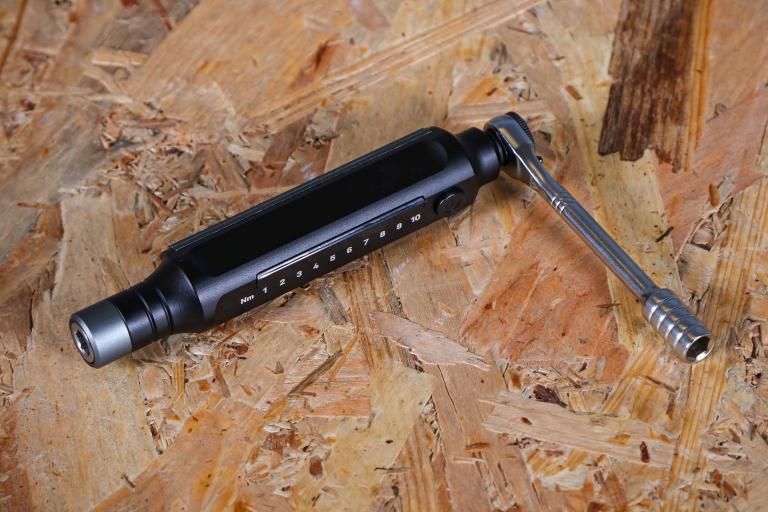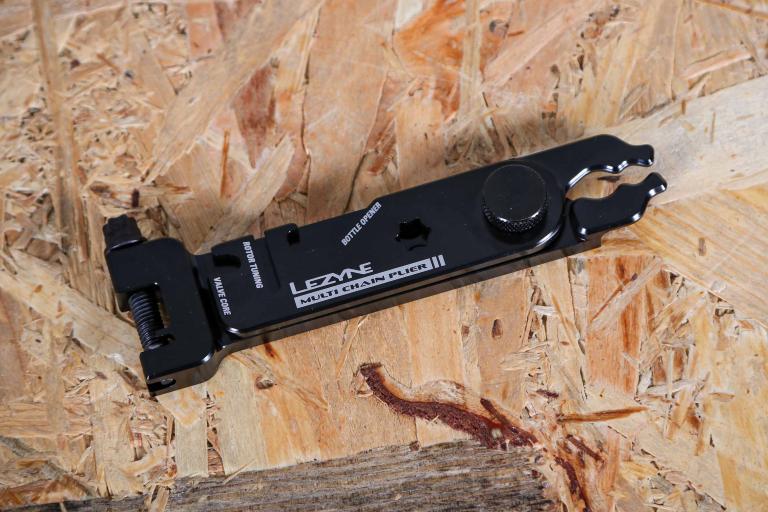- News
- Reviews
- Bikes
- Accessories
- Accessories - misc
- Computer mounts
- Bags
- Bar ends
- Bike bags & cases
- Bottle cages
- Bottles
- Cameras
- Car racks
- Child seats
- Computers
- Glasses
- GPS units
- Helmets
- Lights - front
- Lights - rear
- Lights - sets
- Locks
- Mirrors
- Mudguards
- Racks
- Pumps & CO2 inflators
- Puncture kits
- Reflectives
- Smart watches
- Stands and racks
- Trailers
- Clothing
- Components
- Bar tape & grips
- Bottom brackets
- Brake & gear cables
- Brake & STI levers
- Brake pads & spares
- Brakes
- Cassettes & freewheels
- Chains
- Chainsets & chainrings
- Derailleurs - front
- Derailleurs - rear
- Forks
- Gear levers & shifters
- Groupsets
- Handlebars & extensions
- Headsets
- Hubs
- Inner tubes
- Pedals
- Quick releases & skewers
- Saddles
- Seatposts
- Stems
- Wheels
- Tyres
- Health, fitness and nutrition
- Tools and workshop
- Miscellaneous
- Cross country mountain bikes
- Tubeless valves
- Buyers Guides
- Features
- Forum
- Recommends
- Podcast
review
 2022 Birzman Rotor Truing Fork
2022 Birzman Rotor Truing Fork£15.99
VERDICT:
Well-presented, decent enough tool, if slightly pricey
Two laser-cut slots for the right leverage
Coated handle
Hanging hole
Price
Weight:
229g
Contact:
At road.cc every product is thoroughly tested for as long as it takes to get a proper insight into how well it works. Our reviewers are experienced cyclists that we trust to be objective. While we strive to ensure that opinions expressed are backed up by facts, reviews are by their nature an informed opinion, not a definitive verdict. We don't intentionally try to break anything (except locks) but we do try to look for weak points in any design. The overall score is not just an average of the other scores: it reflects both a product's function and value – with value determined by how a product compares with items of similar spec, quality, and price.
What the road.cc scores meanGood scores are more common than bad, because fortunately good products are more common than bad.
- Exceptional
- Excellent
- Very Good
- Good
- Quite good
- Average
- Not so good
- Poor
- Bad
- Appalling
The Birzman Rotor Truing Fork is a well-made and precise tool for getting your rotor rub-free.
If you run disc brakes (and why wouldn't you?) it's almost inevitable that at some stage you will find yourself in need of a rotor truing fork. Learning how to true a rotor – whilst bothersome – is a rite of self-help resourceful-cyclist-growth passage not dissimilar to learning how to mend a puncture.
Disc brake rotors are anywhere between 1.5 and 2mm thick, and 140-200mm in diameter. Or, 'very thin' in common language. This thinness makes rotors very susceptible to bending, even by leaning a bike down in thick grass.
The 'rule' used to be that you only ever laid your bike down drive side up – to protect the fragile rear mech and hanger. With the advent of disc brakes this is less applicable, as mechs and hangers have become more robust, better protected and more inboard. Yes, the mech side has more potential for expensive repairs being needed, but that's rare compared with the almost-certainty of bending a rotor laying your bike down wrong on the brake side. Basically, be careful whatever side you're laying a bike down on.
> The stuff they never tell you about rim brakes
Clearance inside the calliper between rotor and brake pad is usually measured in fractions of a millimetre – so you can see how even the slightest knock can induce a rubbing rotor. This is not only annoying, it will prematurely glaze and wear the pad on the rubbing side, leading to uneven pad wear and need for earlier replacement. Not good for your wallet, bike time or the planet.
I have mechanic colleagues who swear by a 'fingers-only' approach to rotor straightening – on the assumption that a rotor bent beyond what fingers can straighten is too far gone to recover. If you're trying this, be sure to do so wearing clean gloves – no contaminants on your rotor, please.
> 7 tips to get the best disc brake performance on your bike
Sometimes it's just the slightest of tweaks that's needed to silence a rotor, and therefore a tool can be overkill, inducing too much bend the other way and leading you into a disheartening cycle of see-sawing back and forth between rubbing sides. There's a special technique I've developed, which uses 5mm hex tools inserted through the joining piece to effect the right amount of bend either way.
But for most solid-metal rotors, a tool like the Birzman Rotor Truing Fork is what you need.
Laser-cut from steel alloy, with two slots for deep or shallow engagement and with a polymer-coated handle, it's nicely presented. The long slot – the one used most often – is offset by 10 degrees, positioning the handle away from the spokes for ease of use. With great leverage comes great responsibility – and the inclination can be to go too far with the initial bend. Having such a long handle does allow for small adjustments to be made; there's certainly no need for more than a few fingers on the tool to effect sufficient bend.
It's hard to get too excited about variations on what is a very basic tool. So long as it's not rusty and the slots are straight, pretty much anything will do. For the last decade I've been using a rotor truing tool made by a friend from thick stainless steel sheet in his garage. It's perfectly usable and has personal sentimental value too.
But do you need such a tool – when an adjustable spanner set to the appropriate gap can suffice? Yes, is the answer. I've used a spanner in this manner when nothing else was available. It's effective, but certainly not couth. And there's a very real risk that the spanner might have contaminants like oil or grease on it – in which case you've swapped a rubbing rotor for a contaminated one, likely to either shriek, not work, or both.
> 8 reasons not to get disc brakes — find out the hassles before you switch
Value-wise, at £16 Birzman's tool sits in the middle of the road, between the high-end Park Tool Rotor Truing Fork DT-2 at £21 and a plethora of £9-£10 clones available online. Yes, the Park Tool one has a lifetime warranty – but how you'd ever wear a rotor fork out or damage one is beyond me. So yes, there's probably a few quid in there for the Birzman brand, if that matters to you.
If you want to become self-sufficient in the rub-free rotor game, the Birzman Rotor Truing Fork is a good, if somewhat overpriced for what you get, shout.
Verdict
Well-presented, decent enough tool, if slightly pricey
road.cc test report
Make and model: Birzman Rotor Truing Fork
Size tested: 10 inches
Tell us what the product is for and who it's aimed at. What do the manufacturers say about it? How does that compare to your own feelings about it?
It's for people wanting to keep their rotors straight.
Birzman says: "The Rotor Truing Fork features two laser cut slots offering different leverage ratios, on top of an ergonomically designed angle providing a precise grip for controlled adjustments of the rotor."
Tell us some more about the technical aspects of the product?
Birzman lists:
Material
Alloy steel / High polymer
Size
10
Rate the product for quality of construction:
8/10
Nicely presented.
Rate the product for performance:
7/10
Works as well as any other.
Rate the product for durability:
8/10
Seems durable.
Rate the product for comfort (if applicable)
7/10
The handle is nice in the hand.
Rate the product for value:
5/10
Tell us how the product performed overall when used for its designed purpose
Worked well enough.
Tell us what you particularly liked about the product
Nothing, really.
Tell us what you particularly disliked about the product
Nothing, really.
How does the price compare to that of similar products in the market, including ones recently tested on road.cc?
Park Tool's is more expensive, Unior's about the same price, with a thousand web-based random brands offering the same functionality for around £5 less.
Did you enjoy using the product? Yes
Would you consider buying the product? Yes-ish
Would you recommend the product to a friend? Maybe
Use this box to explain your overall score
It's hard to get excited about a metal sheet with a cutout in it – and at £16, it's a bit pricey – but it does the job.
About the tester
Age: 47
I usually ride: Sonder Camino Gravelaxe My best bike is: Nah bro that's it
I've been riding for: Over 20 years I ride: A few times a week I would class myself as: Expert
I regularly do the following types of riding: cyclo cross, general fitness riding, mtb, G-R-A-V-E-L
Living in the Highlands, Mike is constantly finding innovative and usually cold/wet ways to accelerate the degradation of cycling kit. At his happiest in a warm workshop holding an anodised tool of high repute, Mike's been taking bikes apart and (mostly) putting them back together for forty years. With a day job in global IT (he's not completely sure what that means either) and having run a boutique cycle service business on the side for a decade, bikes are his escape into the practical and life-changing for his customers.
Latest Comments
- PenLaw 40 min ago
Where were you on the morning of the 18th January?
- LookAhead 43 min 23 sec ago
The point is that mudguards take up space (between the chainstays, under the fork crown, etc.) that the tires can no longer occupy, so the max...
- Chris RideFar 1 hour 3 min ago
The Tour typically alternates between having one foreign Grand Depart and the following one on French soil. Given that it's Barcelona for 2026, it...
- tony.westclassics@live.co.uk 1 hour 17 min ago
Has anyone tried to cancell there Discovery+ sub, they try every trick in the book to keep your money, I tried, got to pass word and another page...
- tony.westclassics@live.co.uk 1 hour 28 min ago
What ideot invented this, you have to buy pedels AND she,s, SO my Sidi,s are no good for them, they sit down and think of more ways of get peoples...
- brooksby 1 hour 56 min ago
I imagine that the prosecution wasn't sure that they'd get dangerous past the jury or the magistrate, so accepted careless as a "slam/dunk". It...
- zweiblumen 2 hours 22 min ago
That's an interesting test, but only mentions the elephant in the room at the very end - you're burning far more matches by going hard up the hills...
- Bungle_52 2 hours 30 min ago
But when all the work is done for them and it's a driver :...
- Rome73 3 hours 41 min ago
I did a community 'engagement' with the Met Police last weekend in north London. The police were bike marking (logging bikes on Bike Register) and...
- GravelIsNothingNew 10 hours 24 min ago
Ooh pretty colours put the price up. A radical new retail tactic. ...I'm shocked. LOL.




Add new comment
5 comments
I've got a rule about tools: if I'm not likely to use it once every 2 years, I don't need it. This would definitely not make the list. I'm careful with my bikes but never had a bent rotor. Where it's a matter of fractions of a mm, I don't think think this will be able to solve the issue. If a rotor is bent, swap it out.
And what's wrong with an adjustable spanner?
I had used my original early 90s Cool Tool, which is built around a small adjustable spanner, to attempt to remove bends in my rotors.
I'd wanted a trueing tool since getting a disk braked bike, I like proper tools, but other things came first and when I remembered when buying other things online they didn't seem to be stock.
Finally ordered the Park Tool version, which arrived a few days after I broke the frame of the bike. Got the bike built up today. And got to unwrap the tool and use it.
It's just better. Feels right. Does a fine job. Much less of a warp in the front rotor now. Wish I'd brought it years back.
And to think this site gets accused of trying to stoke arguments in the comments to get more traffic. 😉
Just answer the question.
<drums fingers Monty Burns-style>